#bipoc stories
Explore tagged Tumblr posts
Text
🩷 Sapphic BIPOC Books for Sapphic September
💜 Too often, books by authors of color get shelved out of view in favor of books written by well-known, already-established white authors. No more! In this amazing era of writing, there are more sapphic books by authors of color (about characters of color) than ever before! Here are a few sapphic BIPOC books to consider adding to your TBR! Spread the word about these books to give them the attention they deserve.
🩷 Girls of Paper and Fire -Natasha Ngan 🩷 You Should See Me in a Crown - Leah Johnson 🩷 Once Ghosted, Twice Shy - Alyssa Cole 🩷 Cinderella Is Dead - Kalynn Bayron
💜 Friday I'm in Love - Camryn Garret 💜 The Love & Lies of Rukhsana Ali - Sabina Khan 💜 Wild Beauty - Anna-Marie McLemore 💜 Last Night at the Telegraph Club - Malinda Lo
🩷 Gay the Pray Away - Natalie Naudus 🩷 D'Vaughn and Kris Plan a Wedding - Chencia C. Higgins 🩷 The Good Luck Girls - Charlotte Nicole Davis 🩷 Clap When You Land - Elizabeth Acevedo
💜 The Midnight Lie - Marie Rutkoski 💜 Tell Me How You Really Feel - Aminah Mae Safi 💜 We Set the Dark on Fire - Tehlor Kay Mejia 💜 The Henna Wars - Adiba Jaigirdar
🩷 All of Us with Wings - Michelle Ruiz Keil 🩷 How to Find a Princess - Alyssa Cole 🩷 Cinderella Is Dead - Kalynn Bayron 🩷 Sorry, Bro - Taleen Voskuni
💜 Wish You Weren’t Here - Erin Baldwin 💜 Girl, Serpent, Thorn - Melissa Bashardoust 💜 We Didn’t Ask for This - Ali Alsaid 💜 The Grief Keeper - Alexandra Villasante
🩷 Tell Me Again How a Crush Should Really Feel - Sara Farizan 🩷 Laura Dean Keeps Breaking Up With Me - Mariko Temaki 🩷 It’s Not Like It’s a Secret - Misa Sugiura 🩷 Everything Leads to You - Nina LaCour
💜 You Exist Too Much - Zaina Arafat 💜 The Skin and Its Girl - Sarah Cypher 💜 Hijab Butch Blues - Lamya H 💜 Roses in the Mouth of a Lion - Bushra Rehman
🩷 Faebound - Saara El-Arifi 🩷 Legendborn - Tracy Deonn 🩷 The Weight of Stars - K. Ancrum 🩷 Dread Nation - Justina Ireland
💜 I’ll Be The One - Lyla Lee 💜 Not Your Sidekick - C.B. Lee 💜 Honey Girl - Morgan Rogers 💜 Every Body Looking - Candice Iloh
#bipoc stories#support bipoc#bipoc#bipoc books#sapphic books#sapphic#sapphic september#sapphic romance#books#book reader#book reading#queer book recs#book recs#lesbian romance#lesbian pride#lesbian books#lesbian fiction#lesbian#wlw romance#wlw fiction#wlw post#wlw#batty about books#battyaboutbooks
22 notes
·
View notes
Text
Recently, after reading my friend @metalheadsforblacklivesmatter ‘s posts, I thought it was finally time to share my own story experiencing medical racism, transphobia and sexism.
TW: MEDICAL TOPICS, RACISM, TRANSPHOBIA, SEXISM AND EDS.
Somethings about me and disclaimers:
For those who don’t know me, hi hello, what’s the dealio? My name is Kuco, I’m a two-spirit black-indigenous mixed person. I am light-skinned, but most people can tell I’m mixed or assume I’m Latino, to the point where my medical documents mark me as Hispanic despite myself telling them to change it. I’m also AFAB.
While my experience is bad, it’s not unique to just me. Other people who are apart of the BIPOC community have faced the same or much worse. Regardless, please listen those in the community with darker skin. They often face much worse. If you’re only comfortable listening to those with lighter skin and feel more comfortable while claiming you’re an ally, you’re wrong and need to do better.
My story:
In 2021, I was experiencing nausea and vomiting after I ate. After a week of this continuously happening while working, I went to see a doctor who sent me to a surgeon, who sent me to a gastroenterologist to see what could be done without surgery.
This doctor was a cis white man in his late 60s who was apparently “retired.” After pointing out my symptoms and how they were getting worse, he looked through my medical history and noticed I had anxiety. He immediately went to the conclusion of a “brain-to-gut” connection, saying it was often found in woman. (Shock to no one, that wasn’t the case. Also, the issue was not my anxiety. My anxiety has progressive gone down and was at the lowest it had been in YEARS. My therapist at the time even confirmed this himself.) During this time, he also repeatedly referred to me using she/her pronouns, despite that my medical record points out that I am transgender and went by he/him pronouns at the time. (Despite me pointing this out, he continued to ignore this.) He gave me medications that were supposed to help, a doctor’s note (as I worked at the time) and sent me on my way.
Things only got worse. After 6 months of my symptoms getting worse and worse (to the point I could not eat solid food and started vomiting liquid) and several tests, he still believed it was a brain to gut issue. I had lost a lot of weight, to the point my own family noticed.
One of the last appointments I had with this doctor involved what’s called a gastric emptying test. For this test, a radioactive isotope (which isn’t harmful to humans) is put into some eggs and ingested. Pictures are taken of your stomach to track how long the isotope stays in your stomach after 2 hours, 3 hours, and 4 hours. Normally, your stomach is meant to empty at the 2 1/2 to 3 1/2 hour mark. (By what I was told, mind you.)
My stomach emptied finally at the ladder end of 4 hours. This was considered on the way lower end of normal.
Once my doctor got this result, this was his response: The test says that your empty is at the lower end of what was normal, so that’s normal. Just keep taking your meds. It’s more common for Caucasian (white) people to have more serious gastric problems. Just so you know, I’m not writing you another note for your work, it’s not what I do.
This is what broke the camel’s back.
I called my primary care doctor and let her know that I wanted a different doctor who was a woman to see. I told her that he wasn’t listening to me nor taking me seriously and I refused to see him again. I also let her know that he was refusing to write me anymore work notes, despite the issue not being resolved. (A small time after this, my job let me go due to not having a return date. They said I was allowed to reapply afterwards, but I didn’t for different reasons. That’s another story for a different day.)
My primary care doctor sent me to a different doctor who was a woman and also happened to be a POC.
I had an appointment a week later, in which I told her all my symptoms and how I was barely able to eat it drink anything without being nauseous and vomiting. She listened to me while looking at my previous results from previous tests, in which she saw my gastric emptying test.
Her response was: Your test says your emptying is on the lower end of what’s normal, but by what you’re saying, it’s only gotten worse. Why didn’t he give you anything? I’m surprised you’re even talking to me right now.
I told her that he had said that due to my anxiety, it was a brain to gut issue, which was common for “woman” and continually insisted on that, as well as his other comments. She concluded I have a condition called Gastroparesis, or delayed gastric emptying. This is a condition that affects the stomach muscles and prevents proper stomach emptying. While there isn’t a certain idea of why it happens, it’s thought that those who previously suffered from EDs and have diabetes contract it more. (I had suffered from EDs when I was younger and have a history of diabetes that runs in my family, which is where I believe my causes came from.)
I suffered 9 months with this condition without proper treatment, in which my symptoms were prolonged, got worse, and almost passed, all because if ONE doctor.
While I got better for a time, I’m still battling with this condition, as well as other conditions that came along.
~~~~~~~~~
When those in the BIPOC community tell you we don’t trust white people, especially doctors, it’s because we’ve been shown time and time again the complete disregard for our care and safety.
Use your allyship for good and protect us.
I would like to thank my friends for your help, but especially with my partners and my friend @metalheadsforblacklivesmatter . They helped me so much through those 9 months, and even now continue to help and support me. I love you guys so so much. 🩵🩵🩵
#bipoc stories#black lives are human lives#afro indigenous#indigenous#black lives matter#black lgbt#lgbtqplus#two spirit
134 notes
·
View notes
Text
André Holland Gives Expert Peformance Exhibiting Forgiveness
Loved everything about this film and you will too! #exhibitingforgiveness #sundancefilmfestival #sundance
Growing up as a military kid and getting to know my Dad was challenging. We weren’t always sent on his assignments and it was only as an adult that I began to understand his emotional distance and tough exterior with empathy and love. So, when I learned that Oscar-shortlisted filmmaker and celebrated painter Titus Kaphar loosely based his story into a fresh cinematic language of paint and…

View On WordPress
#andra day#andre holland#aunjanue ellis#BIPOC stories#black podcast#drama#exhibiting forgiveness#fiction#podcast#sundance#sundance 40
2 notes
·
View notes
Text
Why is it so freaking hard to find Chicano and Afro-Chicano voice actors, particularly queer Chicano and Afro-Chicano voice actors, for audiobooks? Preferably from SoCal (never thought I'd see the day I can't find an actor in California.)
I legit have a paying job for them to do. An all BIPoC dark fantasy novel which is part of a series. In others words: returning work.
Does anyone know anyone? Am I just looking in the wrong places?
Because I am finding a payload of White guys who are way too happy to "play" Chicano/Afro-Chicano and I am not doing that. All my narrators are BIPoC (and women up to this point) because all my works are BIPoC. (Don't like it? Ask J. K. Rowling for a job, I'm not her.) And this upcoming work of mine needs a male narrator.
This is very frustrating.
#vo#voice acting#voice artist#voice actor#voiceover#audiobook#help wanted#chicanx#chicano#latinx#jobs#bipoc stories#queer bipoc#bipoc#afro-chicano#afro-latin#afro latino#new novel#dark fantasy#books
9 notes
·
View notes
Text
The Learning Tree (1969) is director Gordon Parks’ first feature length film, and the first film directed by a Black director for a major US film studio (Warner Brothers-Seven Arts in this case.) The film focuses on a snippet of the life of Newt Winger, a 14 year old living in Cherokee Flats, Kansas in the 1920s. The film was shot on location in Cherokee Flats, and is semi-autobiographical; based on a book Parks write six years earlier. It was inducted into the US Library of Congress’ National Film Registry in 1989.
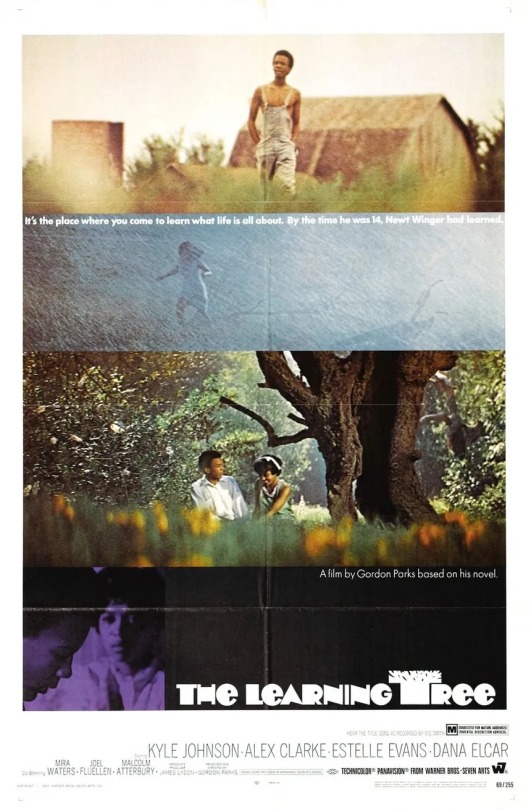
In my opinion it’s a beautifully shot and well-acted film. I recommend everyone watch it!
youtube
Content warning for (period typical) racism, white supremacy, and slurs. There is also gun violence and implied sexual content.
3 notes
·
View notes
Text
Race-Bending: It demeans us all
Ok, for real this time, this is my very last argument against “bending” especially when it comes to race. When white actors played the parts of BIPOC people long ago, we still held Hollywood accountable for this bad casting because it is racist. It’s so serious, that a lot of these films mention and apologize in advance for doing this admitting that looking back, it was not ok. And I agree. It’s not right. A person’s culture or race is not a role even when the “tribe” or “clan” is fictional. These people are a reference to actual people, an actual culture and actual mythology. It merits respect.
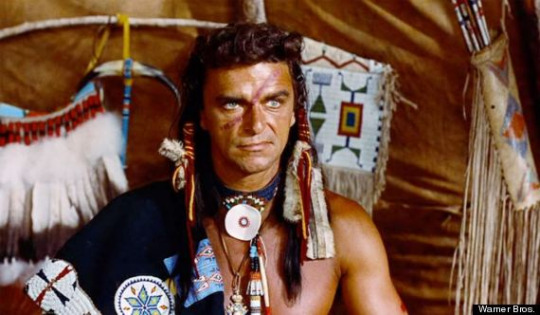
And the same goes for recolouring BIPOC characters to be white. This is Baxter Stockman who is established as being black yet he was recoloured here. This is not a cool thing to do. The Lord himself meant for the human race to be colourful and equal. There is no rhyme or reason to not cast BIPOC actors to play BIPOC parts or to not paint established characters in their correct colours. Being BIPOC is natural and beautiful.
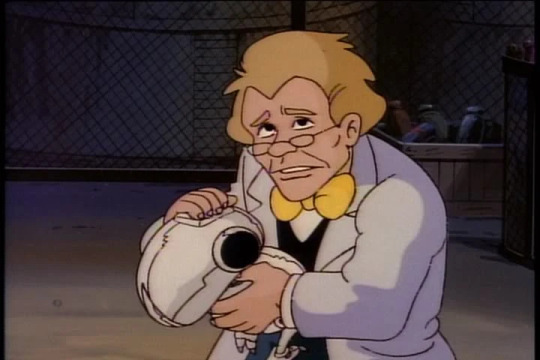
With that said, the reverse is not ok either. Even if the character and their nation is fictional, like I said before, they mirror and represent real life. And a lot of these characters are iconic. Not to mention, it’s very uncomfortable, disturbing and wrong to see a BIPOC actor/character pretending to be white. It’s like you’re saying that original BIPOC characters and roles aren’t as good as white ones and that only white characters have value. To me, that is bigoted.
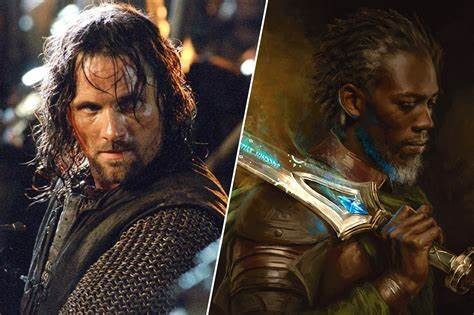
Moreover, it is also bigoted towards white people and please hear me out. White people deserve to have their culture and intelligence respected too. As a Greek woman, I am not ashamed to say that I would be very offended is someone casted a BIPOC person to play Apollo the Greek God of the Sun or a BIPOC person to play Aphrodite the Greek Goddess of Love and Beauty. I can understand them having tanned or olive skin, but they would still be white. They’re Greek. And I doubt England would be pleased to see King Arthur or any of his knights be played by a BIPOC actor. Though if memory serves me correctly, this did happen and people were outraged. And rightly so. I also doubt people would be comfortable with seeing a BIPOC Thor who is the Norse God of Thunder. It looks ridiculous and it is offensive to the culture.
I’m all for representation, but it has to be done the right way otherwise the attempt not only fails, it actually makes you look bigoted because you did not put any thought into it. And if we want BIPOC leads so badly, why not make films and TV shows based on BIPOC mythology? There is so much to you can do with it and I would be elated to see it. We got a taste of it with Mulan and Moana, but we all know there’s more. Let’s see it. Let’s see it all. And there are tons, upon tons, upon tons of books with BIPOC main characters. I would love to see a film or series reboot of “n the Head of the Night which is one of my favourite cop books.
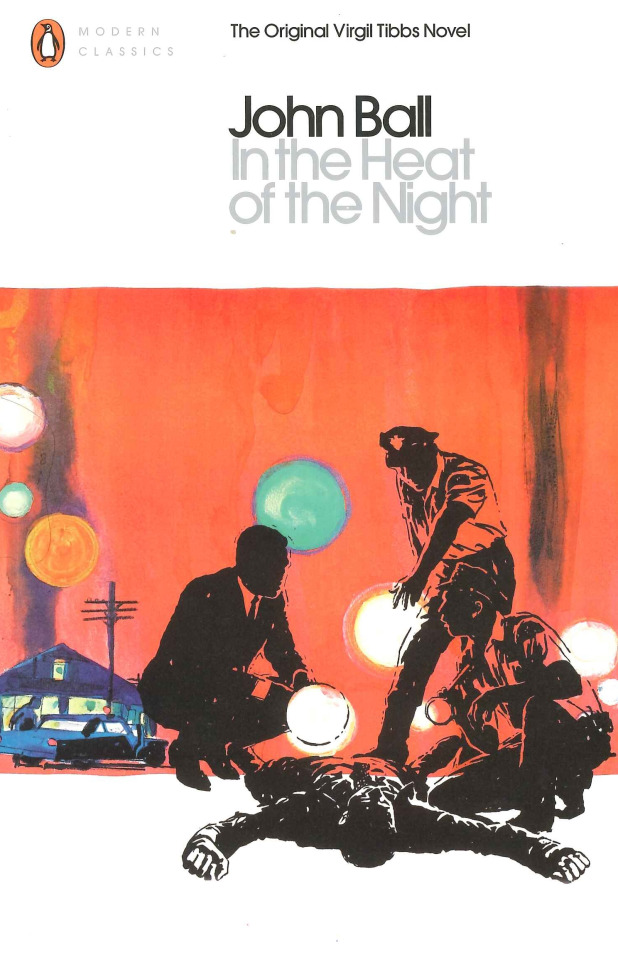
And I would love to see a Green Lantern film or series starring Jon Stewart who is the best Green Lantern in my opinion.
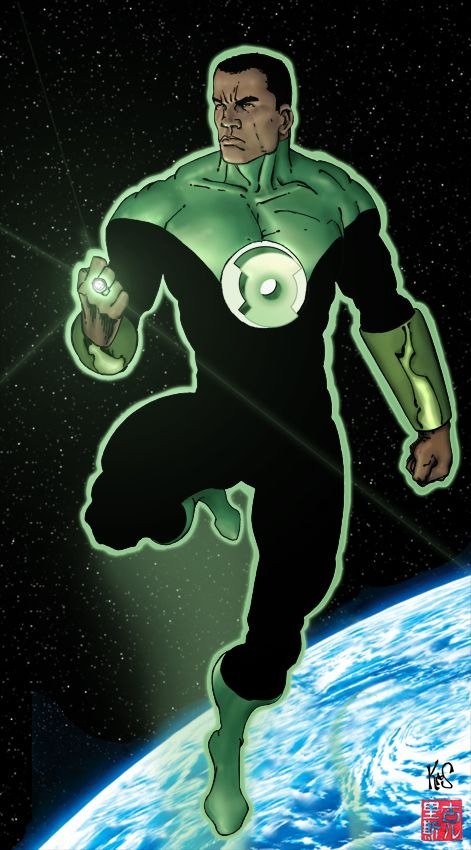
And I would love it if Parasite Eve got its own series from the novel that sparked it all, to the video game. Yeah, Parasite Eve the video game is actually a sequel to a Japanese horror-science fiction novel.
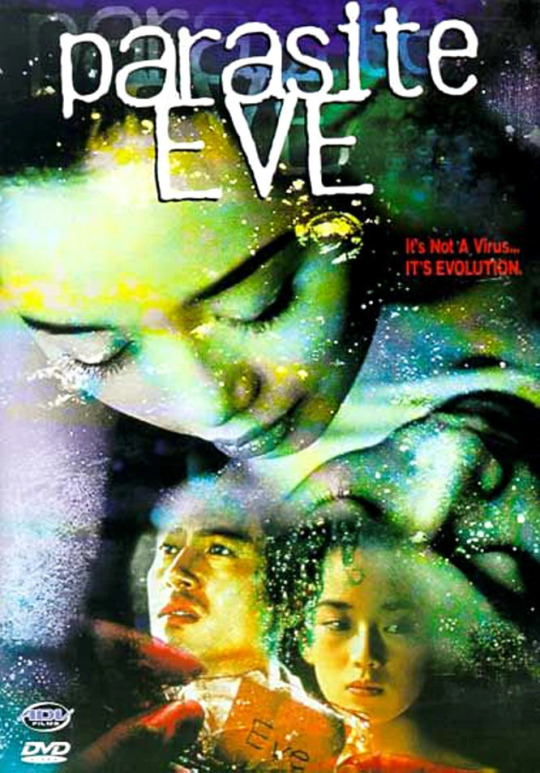
If I am STILL a bigot after making this argument, then all I have to say is... I’m not sorry.
#racebending#blackfacing#no more bending#say no to lazy writing#support diversity#diversity#representation#support good writing#african mythology#asian mythology#arabic mythology#bipoc stories#BIPOC characters#green lantern#in the head of the night#jon stewart green lantern#big hero 6#parasite eve
6 notes
·
View notes
Quote
in retrospect what I heard was a limit, a boundary a fence that firmly encompassed what you could do after all. and maybe I shouldn’t be mad and maybe I shouldn’t have asked for more
#poetry
2 notes
·
View notes
Text
Musings from the Black Velveteen: Equity, Diversity, and Inclusion *are* Important
by the Black Velveteen
Picture it. Summer of 2000. I was a young fourth grader eager and excited to travel with my parents and my baby sister to Myrtle Beach. Living in landlocked Tennessee, going to the beach was truly an adventure! “Don’t touch the jellyfish even if they’re on the sand” I remember my daddy telling me. Sure, daddy I like to look at jellyfish more anyway. Besides, I had other plans. My momma had taken my sister and I to the Dollar Tree a week prior to our trip and told us we could grab whatever beach toys we wanted. For context, my sister and I had just learned how to swim so we were more than prepared to get the toys we wanted! Now, I am a solution oriented individual. I enjoy planning things out especially if I have made up my mind about them. So, of course, I made sure my sister knew that we were going to take full advantage of our time on the sandy Myrtle beach. We grabbed every single sandcastle building tool we could find and made sure our momma knew we needed them all. Thankfully, they were a dollar so convincing our momma that we needed them all was easy. As I stood on the beach in my little one piece swimsuit next to my sister in her matching one piece swimsuit: the true work was about to begin.
My sister and I wanted to build not just any sandcastle, but the bougie version. You know: the sandcastle with a moat. If you’re unfamiliar with a moat, it is a water filled ditch that surrounds castles allowing for only one way in and one way out and that was via a draw bridge that connected the other side of the moat to the castle. I am a person who likes to work smart, not hard. So I suggested that we build our castle first, then build our moat, then fill it with water. Simple enough plan that I shared with my parents just to make sure it wouldn’t be too difficult. They said the plan was a good one and so my sister and I began to work. We built a two and a half foot sand castle with designated wings and structures that we even named after some family members. My sister dug and dug and dug the moat. I helped, but she wanted a very deep moat: I was so proud of her hard work. Now for the cherry on top: water to fill the moat.
To help you visualize: my family was positioned about 500 feet from the ocean so my sister and I had to take our pales designated for “only moat water” to the shoreline, let the waves fill the buckets to the brim, then carry the water we could back and pour it into the moat we (she) dug. So we did our first run! We were so excited we knew we’d need a couple of trips to fill our moat but that was easy. We came back to our lovely sandcastle, stood on opposite sides of the moat and began to pour. Our jubilant smiles and bouncing legs soon turned to furrowed brows of confusion and stillness of disappointment.
We watched as the water levels kept going down until our moat was dry as a bone. My sister and I looked at each other confused and ran right back to the ocean. “Maybe there just needed to be a quick wetting of the sand. This next run we’ll see the water settle and rise!” But alas, it never did. We spent well over an hour going back and forth from the ocean to our beloved sandcastle only to be further frustrated and annoyed that our moat was not coming forth. On one run we looked over and saw some other kids, close to the shoreline, had created an (average and sloppy) sandcastle equipped with a fully functioning moat. They even had a little sail boat in the moat. My sister felt jaded and I was furious. How could this be happening? We had a plan. Our parents said it was a great one! We built a sandcastle of our own design that we were proud of. So why didn’t we have our moat? My sister, exhausted from running on sand in the hot sun, gave up. I kept putting water in until it was time for us to go back to our room. I was tired, but most of all I felt defeated. Not until a decade later did I learn that my parents had a conversation between themselves that they knew we couldn’t build a moat, but by not telling us it would keep us safe and continually in their sight and they would know where we are. As an adult: it totally makes sense, but as a nine year old I couldn’t understand why my efforts were not successful.
I remember that feeling of exhaustion and defeat. Working an entire day at the beach and finding out later my efforts were futile and in vain; also that my parents had withheld information from my sister and myself, albeit for our safety, but it kept us from reaching our goal of building a sandcastle that was for us, by us. This familiar feeling arose within me again as I continue to trudge through demanding equity, diversity, and inclusion at my workplace. By attending the Strategies to Build Diversity, Equity, and Inclusion: Leadership and Policies webinar, I learned why DEI work is so important and that in order for it to truly function within an organization, empowerment and trust are key. Those in power must be willing to share that power. Management cannot simply say that they are doing “good race equity work” when internally there is a lack of trust and no indication that equity, diversity, and inclusion are prioritized. When Black women, femmes, and gems are verbally berated in the office over a simple task and there is absolutely no accountability or consequences for the harm caused: then there is no trust. When women of color have to be put through a test just for their white supervisor to trust them because they didn’t trust the last employee in that position, shows that there is no competency on how imbalanced power dynamics can be harmful. When white women in power are allowed to be bigoted and the president of the organization is complicit in that behavior, that does not show a commitment to protecting those most marginalized in the workplace. It shows that power is settled at the top and those at the top are comfortable with keeping and protecting that power, rather than sharing.
By constantly working marginalized workers under stressful conditions of white supremacy, white feminism, bigotry, and classism: the moat is kept from being filled. However, if those in power were willing to share their power (or the marginalized seize the power, whichever comes first), a restructuring that is beneficial for all starts to occur. Systems of accountability that actually include consequences, starts to build trust between the marginalized and those with power. The empowerment to make decisions increases support and bolsters the community building that starts within an organization. By dismantling the hierarchical structure that marginalizes and harms BIPOC, we see an organization that can prosper. So, when building a sandcastle with a moat, try to find a compromise that shares power with the powerless and emboldens those who are committed to put forth their best effort. Move closer to the sea so you can fill your moat.
2 notes
·
View notes
Text

Help if you can!
1 note
·
View note
Text
BOOSTING!!
Tapping the "your support and solidarity and care for Jews and Romani people and BIPOC should be more powerful than your hatred of nazis" sign so fucking hard rn.
Bcs u should support Jews and Romani people and BIPOC more than u hate nazis and some of u it is very clear that u couldn't give a shite about Jews and romani or BIPOC. You hate nazis but you've forgotten nazis aren't just generalised bigots or bad people and they have an ideology which targets "undesirables" and people who ate racially seen as inferior or less than. Only part of combating white supremacy and fascism is hating nazis and a lot of it is helping communities effected by white supremacy and fascism and listening to and understanding us.
#jew#jewish#judaism#rromani#romani people#bipoc representation#bipoc stories#bipoc community#bipoc#support bipoc
6K notes
·
View notes
Text
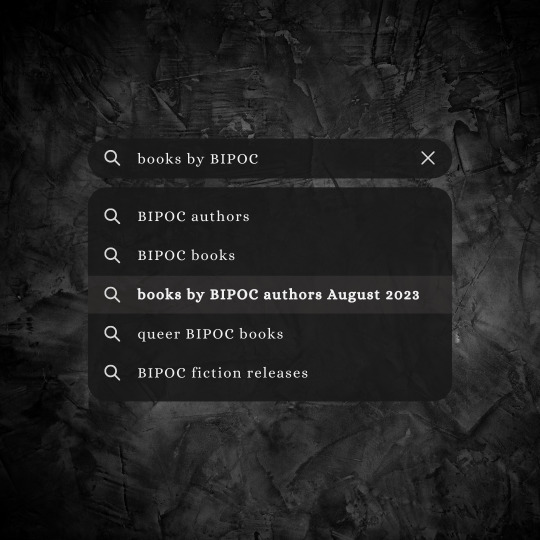


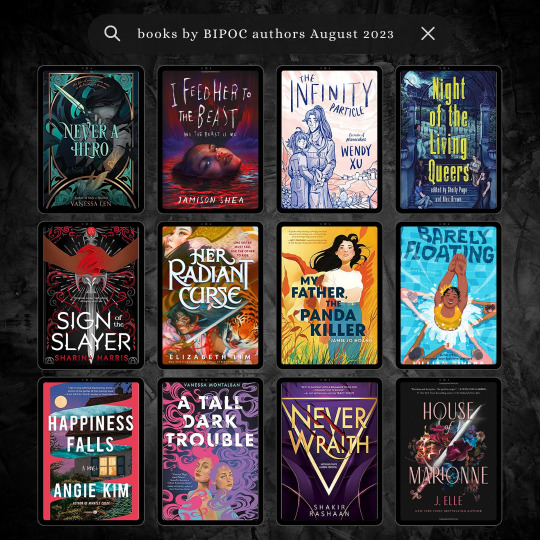
Books by BIPOC Authors August 2023
🦇 I grew up surrounded by a melting pot of cultures, diverse communities, and unique experiences. Despite the different sources of those multicultural voices, their stories still covered universal topics of colonialism, migration, identity, and race. Each story was another flavor, another sweet spice adding to that melting pot. Today, we have books by BIPOC authors that put those unique voices to the page. If you're interested in traveling to different worlds, whether familiar or foreign, here are a few books by BIPOC authors to add to your TBR! 🦇
✨ Tomb Sweeping by Alexandra Chang ✨ The Dark Place by Britney S. Lewis ✨ Forged by Blood by Ehigbor Okuson ✨ Accidentally in Love by Danielle Jackson ✨ A Council of Dolls by Mona Susan Power ✨ Still Born by Guadalupe Nettel, translated by Rosalind Harvey ✨ The Injustice of Place: Uncovering the Legacy of Poverty in America by Kathryn J. Edin, H. Luke Shaefer, Timothy J. Nelson ✨ Hangman by Maya Binyam ✨ The Heaven & Earth Grocery Store by James McBride (Historical Fiction) ✨ Under the Tamarind Tree by Nigar Alam ✨ Vampires of El Norte by Isabel Cañas ✨ An American Immigrant by Johanna Rojas Vann
🧭 Forgive Me Not by Jennifer Baker 🧭 Two Tribes by Emily Bowen Cohen 🧭 A Quantum Life: My Unlikely Journey from the Street to the Stars by Hakeem Oluseyi and Joshua Horwitz 🧭 Writing in Color: Fourteen Writers on the Lessons We've Learned (edited by) Nafiza Azad and Melody Simpson 🧭 Ghost Book by Remy Lai 🧭 The Water Outlaws by S.L. Huang 🧭 Plantains and Our Becoming by Melania Luisa Marte 🧭 Forty Words for Love by Aisha Saeed 🧭 The Great White Bard: How to Love Shakespeare While Talking About Race by Farah Karim-Cooper 🧭 Take the Long Way Home by Rochelle Alers 🧭 Swim Home to the Vanished by Brendan Shay Basham 🧭 Actually Super by Adi Alsaid
✨ Never a Hero by Vanessa Len ✨ I Fed Her to the Beast and the Beast is Me by Jamison Shea ✨ The Infinity Particle by Wendy Xu ✨ Night of the Living Queers, edited by Shelly Page ✨ Sign of the Slayer by Sharina Harris ✨ Her Radiant Curse by Elizabeth Lim ✨ My Father the Panda Killer by Jamie Jo Hoang ✨ Barely Floating by Lilliam Rivera ✨Happiness Falls by Angie Kim ✨ A Tall Dark Trouble by Vanessa Montalban ✨ Neverwraith by Shakir Rashaan ✨ House of Marionne by J. Elle
#books#book list#book recommendation#bipoc#bipoc stories#support bipoc#batty about books#battyaboutbooks
37 notes
·
View notes
Text
SUNDANCE 2025: RICKY
Sheryl Lee Ralph and Stephan James are powerfully nuanced in #Ricky proving just because you've done bad things doesn't mean you can't have a good future. https://wp.me/p2v8yf-6ON #sundance
Church serves as the backbone in the Black culture in good times and in those times that are not so lovely. As a culture, it is believed if you give your life over to God change is imminent on the path to creating a more improved existence guiding you to be born again. This is how we are introduced to Ricky in a circle of women praying for his well being upon return. The difficulty acclimating…
#Andrene Ward-Hammond#BIPOC stories#drama#fiction#first time feature#incarceation#Rashad Frett#ricky#Sheryl Lee Ralph#stephan james#sundance
0 notes
Quote
Two, you cannot change people who are unwilling to participate. You can only create a space in which someone can be invited to learn more, when they are ready.
#thoughts
0 notes
Quote
The only wiggle room I had for funding anything extra was spending "idle" hours, like commuting, study breaks, lunch breaks, creating for Redbubble.
#AcademicChatter
0 notes
Text
I took an edible and am currently thinking about Erik and Christine and like yeah they really are that couple. I love them in all of their attraction, soul-binding and toxicity. They are the blueprint.
#phantom of the opera#erik/christine#christine daae#there is so much to go in-depth about this couple I love them so much#there’s so many ways to interpret their story and I love everyone of them#anyway I will one day write my phantom novel that explores more deeply into how race impacts this story and the trio#and christine and erik will both be bipoc
27 notes
·
View notes
Text
@bimboopo Hiiiiii!!!!👋🏾👋🏾👋🏾 Just wanted to say I love your artwork and your story “Sunflowers for Dragons”! I’m sat when you’re ready to continue it!!!😍🥰🫶🏾
#love this story#Angelee is just so cute#angela x lee#bipoc representation#black fantasy#black supernaturals#get into if you haven’t#hey author#love a fan#miscellaneous#jay#miscellaneous jay#doaom#black girls who blog#black girls of tumblr#blackgirlbloggers#blerd#black tumblr#black creatives#black artists on tumblr#black writers#always gonna go up for fellow blerds
8 notes
·
View notes